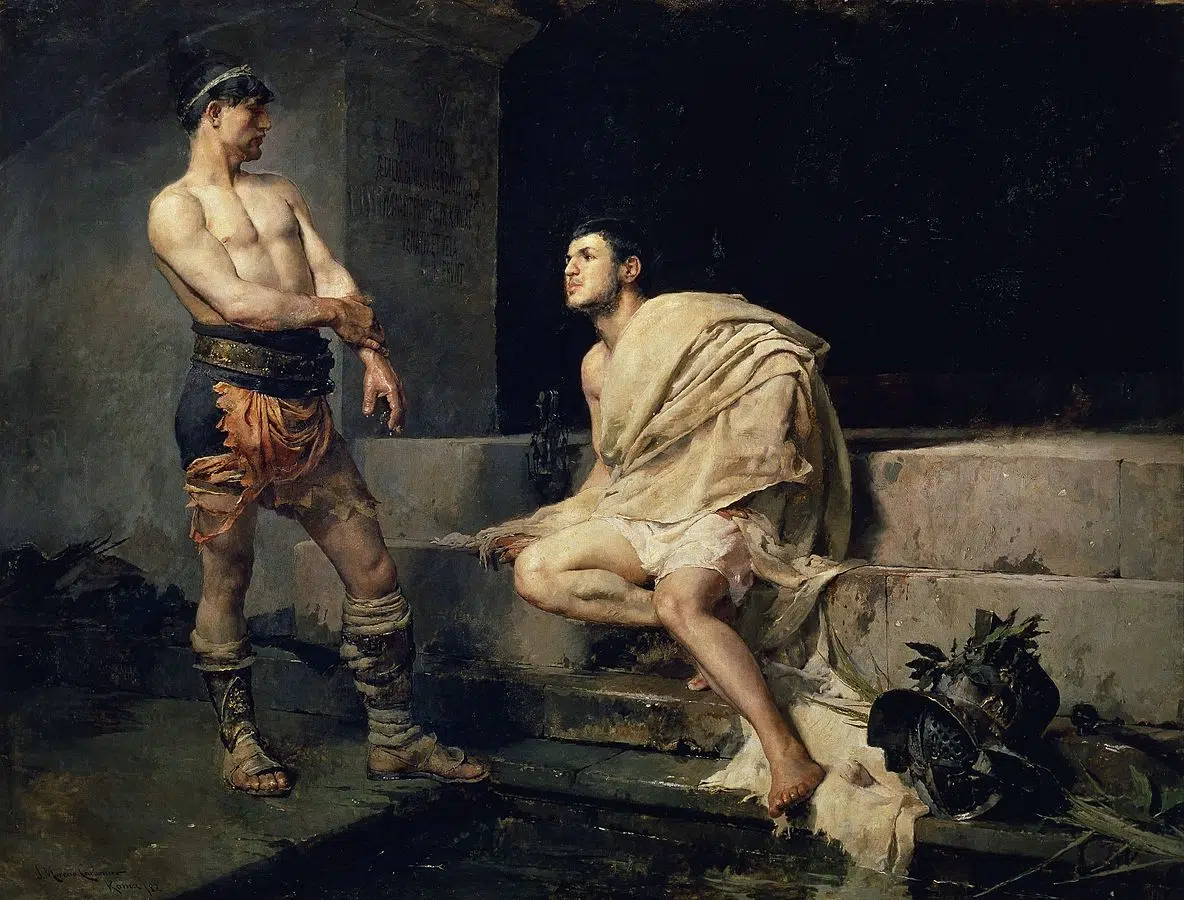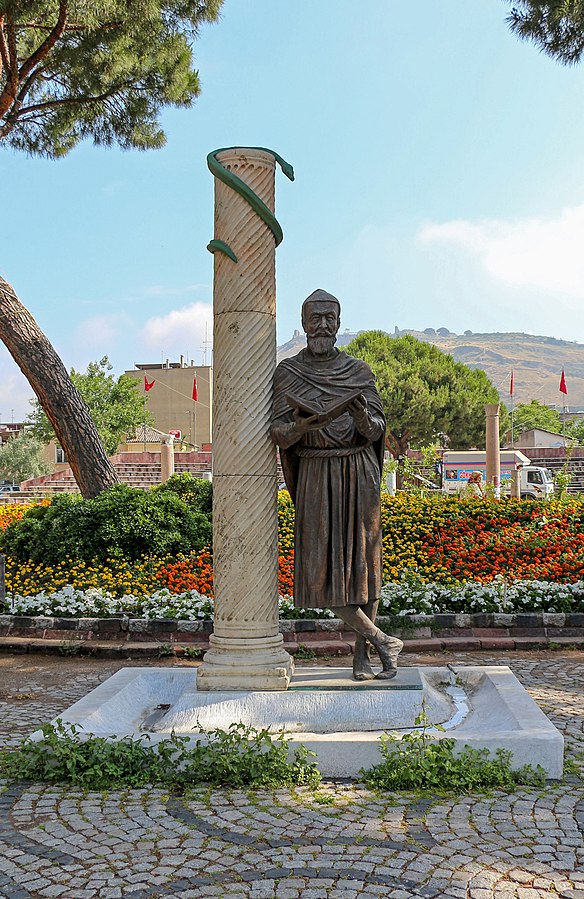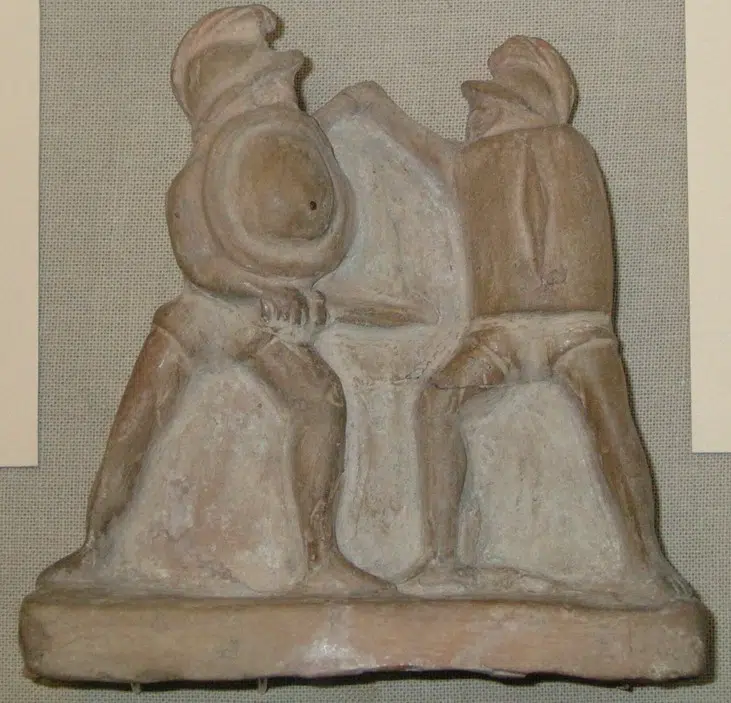
The Roman gladiatorial games were a far cry from the Olympic and theatrical pursuits enjoyed in ancient Greece, but the Greeks played an important role in preparing gladiators for their violent contests.
After their incorporation into the Roman Empire, the ancient Greeks quickly carved out a niche for themselves in a multitude of professions. Greek philosophers and rhetoricians were frequently employed to educate the sons of wealthy Roman aristocrats and Greek merchants took advantage of the Pax Romana to sell their goods far and wide.
For Greek athletes and physicians, Roman rule offered other opportunities. Gladiators required training and medical care, and the Greeks had the requisite skills to provide them.
Gladiatorial games
Gladiators were armed combatants who entertained audiences in the Roman Republic and Empire. Most were slaves who were forced to fight, but some were also volunteers. They would fight, sometimes to the death, in front of large crowds in the arena.
There were specific types of gladiators according to their equipment and fighting style. For example, the murmillo fought with a gladius (shortsword), scutum (large shield), and some armor, including a helmet, manica (arm guard), and shin guards.
Another type of gladiator, the retiarius, was much more lightly armed and fought with a trident and net, which was used to entangle opponents. Some gladiators specialized in combat with animals and fought wild beasts instead.
Bouts in the arena followed strict rules and would usually be marshaled by a referee and his assistant called the suma rudis and the secunda rudis.

Gladiator training
Gladiators lived and trained in a special school called the ludus. The majority of their training was probably orientated to their specific role. The training was conducted with heavy wooden weapons rather than the sharp ones they would compete with.
After the Greek city-states and successor kingdoms were conquered by the Romans, elements of Hellenic culture became popular in the Roman world. Olympic-style athletics were adopted by the Romans and Greek athletes often acted as trainers for aristocratic Roman families or at bathouses.
In some cases, these athletes also worked in the gladiator ludi. Their role might have been similar to that of a strength and conditioning coach employed to help modern athletes today. By this time, the ancient Greeks had spent centuries refining their strength and conditioning practices for the Olympics and other games, so the Greek trainers were perfect for this role.
According to works by Lucius Flavius Philostratus, an Athenian Greek philosopher and citizen of the Roman Empire alive in the second and third centuries AD, gladiators adopted a four-day training regime from Greek trainers called the tetras.
The tetras consisted of a preparation phase on the first day, an all-out training phase on the second day, relaxation on the third day, and moderate to intense exercise on the fourth day.

Medical care and physicians
Gladiatorial combat was a dangerous affair, and the contestants often required medical care for their wounds after a contest. Like the athletes of today, they also adhered to strict diets and nutritional plans.
The most comprehensive primary source on medical care for gladiators and their diets comes from Galen, a Greek physician, surgeon, and philosopher, who lived and died between 129 to 216 AD.
In 167 AD, at the age of twenty-eight, Galen returned to his native city of Pergamon to work as a physician to the gladiators of the High Priest of Asia. According to the historian of medicine, Vivian Nutton, only two gladiators died when Galen was operating in Pergamon, whereas sixty had been killed during the tenure of his predecessor.
Galen’s experience treating wounded and sometimes dying gladiators provided opportunities for medical discoveries. He disproved Aristotle’s assertion that the heart was “the seat of reason” by observing that a dying gladiator who had sustained mortal wounds to the heart remained lucid until death.
Galen also wrote about the diet of gladiators, although he did not think highly of it. The Greek physician wrote that they mostly ate barley and a pudding made of mashed beans.
Galen thought that this was suboptimal and was more likely to make the gladiators fat and flabby than strong and lean. The gladiators were probably fed this way because it was cheap. They were sometimes called hordearii, meaning “eaters of barley.”

The Hoplomachus, a Greek-inspired gladiator
The ancient Greeks also had some more direct influences on gladiatorial games. One type of gladiator called the hoplomachus was probably modeled on the hoplite, the quintessential soldier of Greek antiquity.
Hoplomachi were equipped with a spear, a sword, and a round shield. They would also wear a bronze helmet, a manica, and greaves. Although the Hoplomachi were armed to resemble Greek hoplites, in most surviving depictions, their shields appear much smaller than the large round and concave aspis that was carried by a hoplite.

Gladiatorial games in Roman Greece
As much as the Greeks influenced the Roman world, the Romans also had a profound influence on the Hellenistic world that they had conquered. Gladiatorial games did become popular in the Greek-speaking eastern half of the empire.
According to a study by Christian Mann, “Greek gladiators presented themselves as being very similar to athletes.” This is based on findings of the tombstones of Greek gladiators, which “praised their beauty and their propinquity to heroes.”
In Greece, therefore, it would seem that the culture of athletics—most famously showcased in the Olympics—blended with the imported Roman custom of the gladiatorial contests.
See all the latest news from Greece and the world at Greekreporter.com. Contact our newsroom to report an update or send your story, photos and videos. Follow GR on Google News and subscribe here to our daily email!



